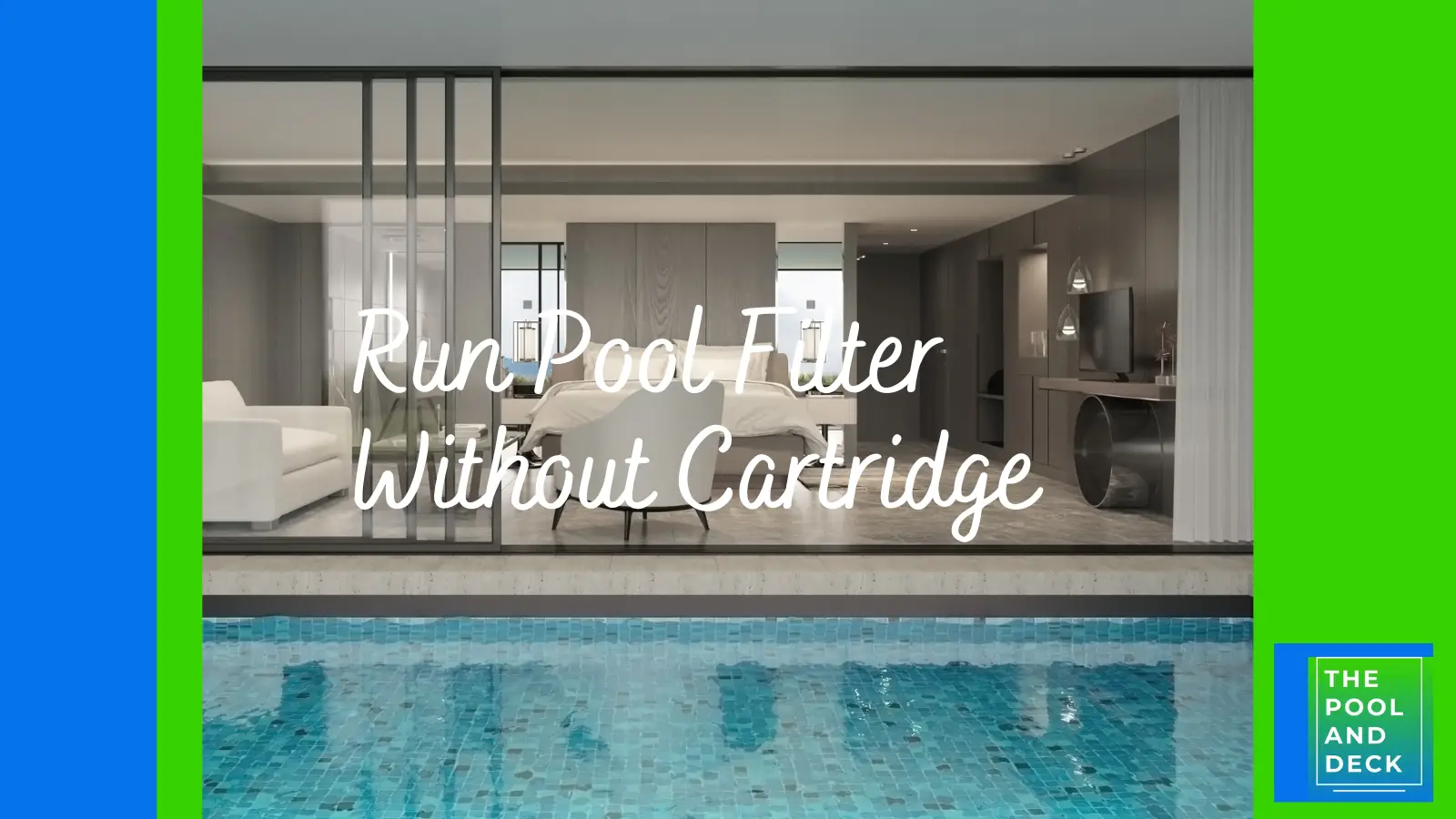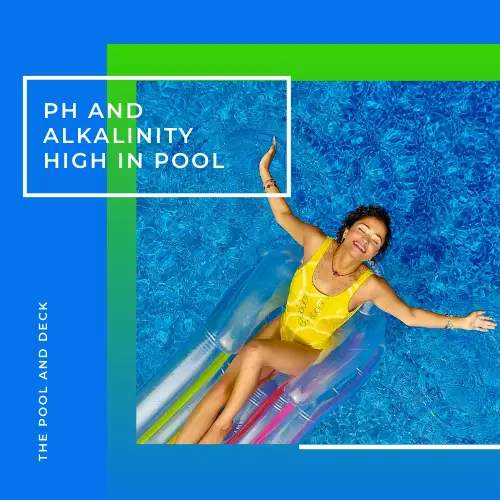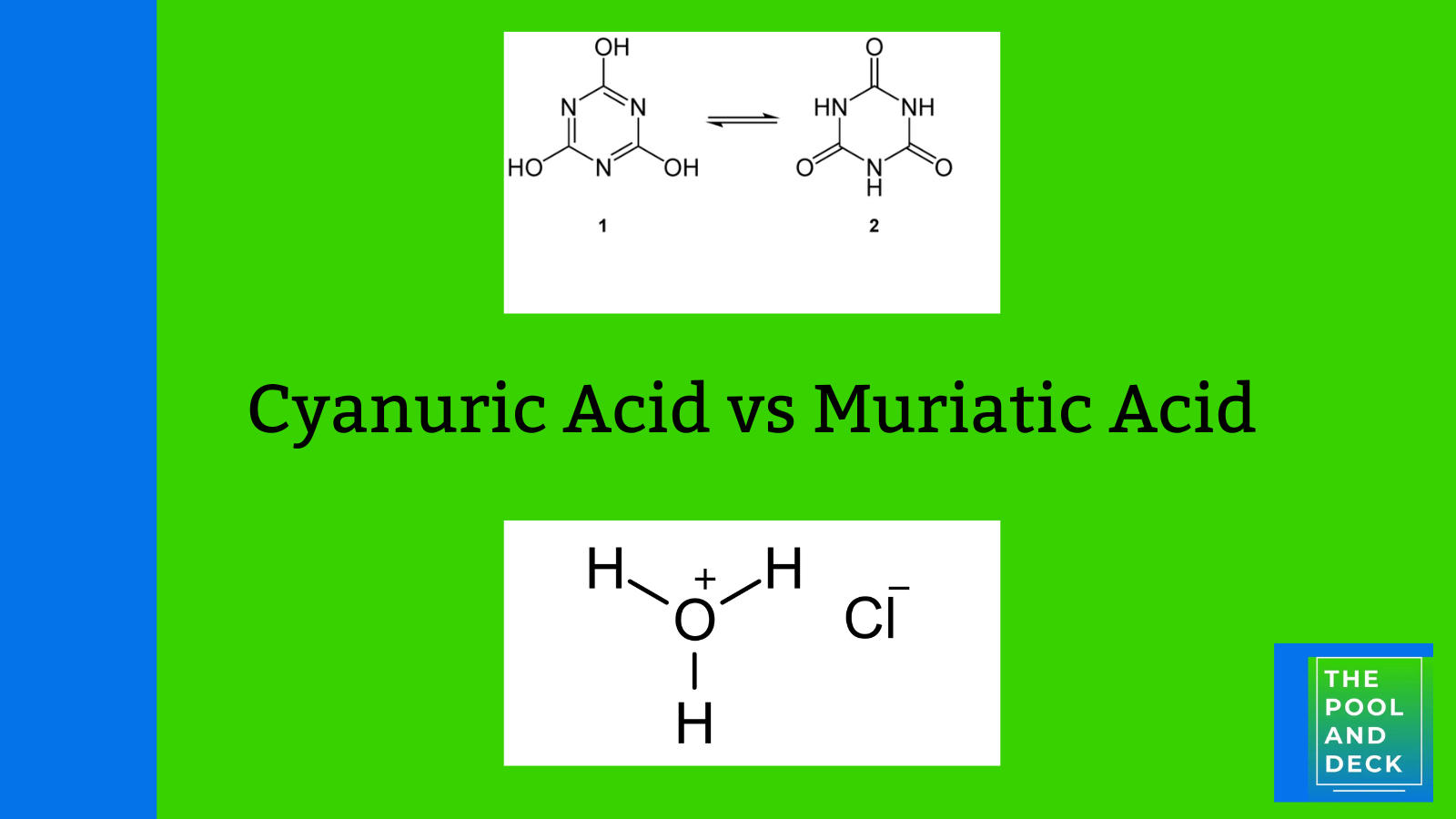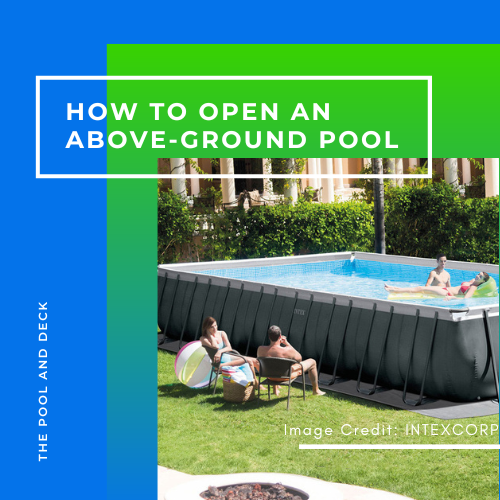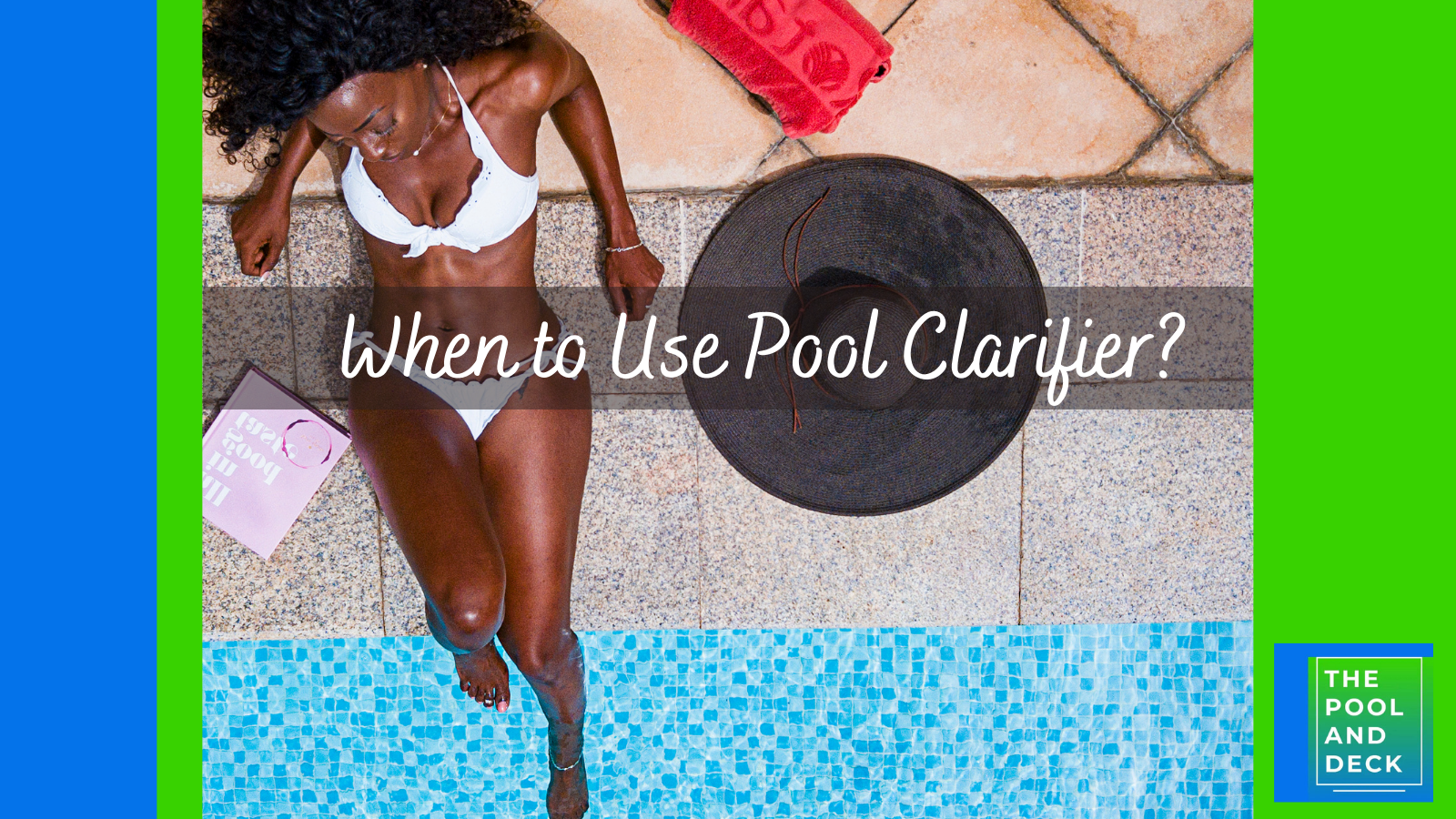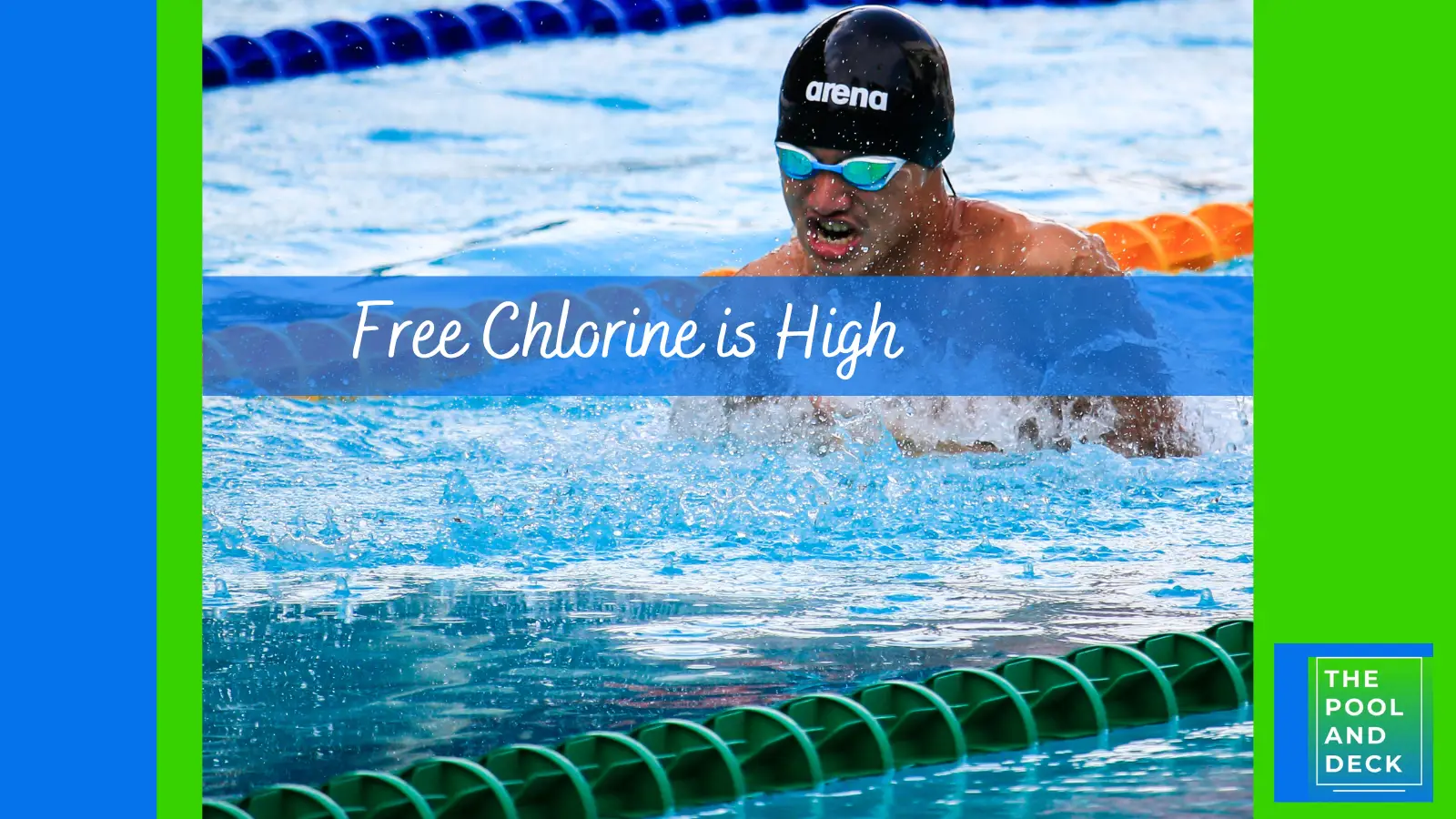Pool Algae Control: 8 Top Tips That Are Effective !
As an Amazon Associate, I earn from qualifying purchases.
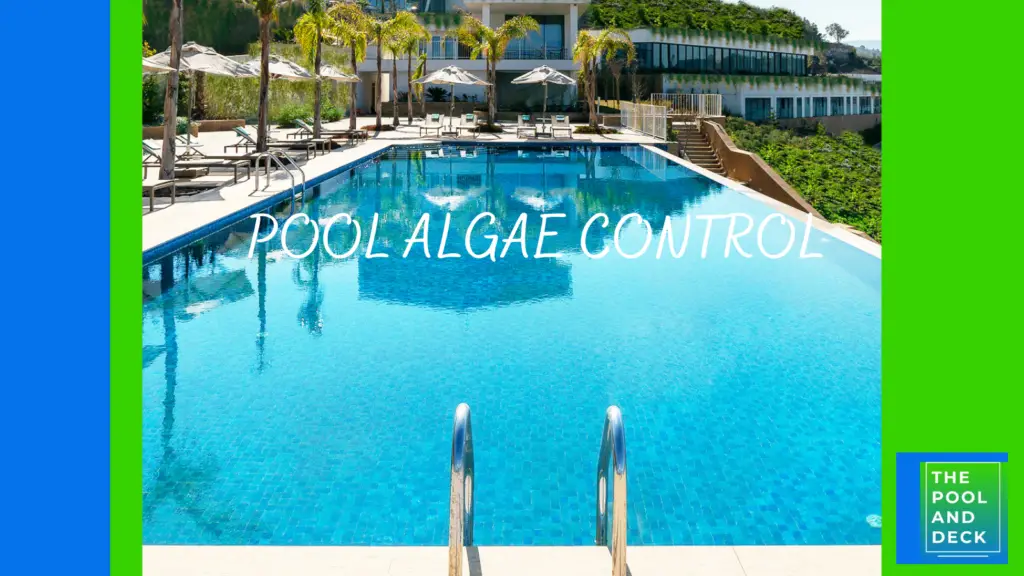
An algae infested pool is a pool owner’s worst nightmare. Effective ways of pool algae control can ensure that you do not have to go through such a horrible phase. Prevention is better than cure so find out about the 8 most effective ways of pool algae control.
Table of Contents
8 Top Tips for Effective Pool Algae Control
| Number | Top Tips | Explanation |
|---|---|---|
| 1 | Maintaining Recommended Chlorine Levels | Maintaining chlorine levels of between 2 and 4 ppm is crucial for pool algae control. |
| 2 | Regular Use of Algaecide | Algaecides are an essential part of pool algae control, but they are not a substitute for chlorine. |
| 3 | Testing & Balancing Water Chemistry Regularly | Testing and balancing pool water chemistry regularly is essential for pool algae control. |
| 4 | Shock Your Pool Every Week | Shock your pool every week to keep it clean, safe and prevent algae from taking over. |
| 5 | Proper Filtration & Circulation | A well-functioning filtration system and proper circulation are essential for keeping your pool clean and free of algae. |
| 6 | Brushing and Vacuuming | Brushing and vacuuming your pool regularly are important for keeping it clean and free of algae. |
| 7 | Clean Pool Equipment | Regularly cleaning your pool equipment will help to keep your pool clean and free of algae. |
| 8 | Keep Pool Covered When Not in Use | Covering your pool when not in use is a simple yet effective way to prevent algae growth. |
1. Maintaining Recommended Chlorine Levels
Maintaining chlorine levels of between 2 and 4 ppm, at all times, is crucial for pool algae control. Essentially, chlorine (or bromine as an alternative) is the pool sanitizer.
When chlorine is added to the pool it reacts with water to form hypochlorous acid (HOCl) and hypochlorite ions (OCl⁻), which together are referred to as free chlorine. This is represented by the chemical equations below:
Cl2+H2O⇌H++OCl−+HClCl2+H2O⇌H++OCl−+HCl
This equation represents the dynamic equilibrium between molecular chlorine (Cl₂), hypochlorous acid (HOCl), hypochlorite ions (OCl⁻), and hydrogen ions (H⁺) in water.
Free chlorine, hypochlorous acid (HOCl) & hypochlorite ions (OCl⁻), is the primary disinfectant. Free chlorine sanitzes by killing algae, bacteria and other pathogens.
HTH 42055 Pool Care 3″ Chlorine Tabs Advanced
Sanitizer, clarifier, and algaecide to protect your swimming pool and swimmers with one easy and convenient tab.
2. Regular Use of Algaecide
Contrary to what you may think, algaecides will not get rid of algae, just by themselves. However, they are an essential part of your endeavor for pool algae control.
Algaecides help prevent algae growth in pools. Copper-based algaecides, the most common type, work against many types of algae.
Algaecides are effective in disrupting vital life activities of the algae. For example, they may inhibit photosynthesis or cause algae cell walls to burst.
Essentially, Chlorine and Algaecides work as a team. Algaecides make the algae weak and chlorine kills them off. Algaecides are not a substitute for chlorine. Instead they are an effective preventive measure.
The non-foaming, non-staining and fast-acting formula both kills and prevents extreme amounts of stubborn green, black and mustard algae for a season of crystal clear pool water and offers up to 3 months of protection.
When choosing an algaecide, you must consider the type of algae you have and the other chemicals in your pool. Copper based algaecide is very effective but the copper in it can lead to a pool that looks green but clear.
3. Testing & Balancing Water Chemistry Regularly
Maintaining critical pool water chemistry parameters within recommended levels is absolutely necessary for pool algae control. And you can not do that unless you test your pool water on a regular basis.
Chlorine levels are important but so are pH and alkalinity.
The pH level measures how acidic or alkaline the pool water is. The recommended pH range for pools is 7.2 – 7.8. Maintaining pH in this range is important because algae tends to flourish at higher pH levels while chlorine efficacy drops.
Algae grows well in water that is not balanced, so testing regularly can help prevent it from growing.
Monitoring and keeping Total Alkalinity (TA) within recommended range is important as TA helps keep the pH level stable. This stability, along with the right sanitizer levels, makes it hard for algae to grow.
Testing your pool water is an easy way to keep it healthy and prevent algae problems. So make sure to test your pool water regularly!
4. Shock Your Pool Every Week
During the pool season you must shock your pool every week. Of course, shock is the only effective remedy if you have an “algae bloom” in your pool.
But shocking your pool every week is like detoxing your body regularly. It is an extremely effective method of pool algae control.
Shock treatment is the way to quickly clean your pool after heavy use or rainstorms. It involves super chlorinating your pool such that the chlorine level is temporarily spiked up to between 10 and 20 ppm. This kills bacteria and prevents algae from growing.
The best time to shock your pool is at night when the sun’s UV rays won’t break down the chlorine as quickly. Sunday night works great for most folks!
The amount of shock required will depend on the size of your pool and the preceding swimmer load. Shock is also the most effective way of lowering combined chlorine levels.
Regular shock treatment is a great way to keep your pool clean, safe and prevent algae from taking over.
Cyanuric Acid Free Shock (Cal Hypo)
HTH 52037 Pool Care Shock Advanced
A fast-dissolving, convenient 4-in-1 Cal Hypo formula that kills bacteria & algae, reduces chlorine odor & irritation, and quickly restores crystal clarity.
5. Proper Filtration & Circulation
A well-functioning filtration system is essential for keeping your pool clean and free of algae. The filter removes dirt, debris, and algae spores from the pool water.
You should run the filter for 8 to 12 hours daily, as recommended for your pool size, to ensure that the water is constantly being cleaned.
Stagnant water is a breeding ground for algae, so it’s important to circulate the water evenly throughout the pool.
You can do this by running the filter pump and using a pool skimmer to remove debris from the surface of the water. Filtration and circulation work together to ensure a good level of pool algae control.
By keeping the water clean and circulating, you can prevent algae growth and enjoy a clean and refreshing swim every time.
You will want to read The Best Way to Put Algaecide In Pool: Why Good Circulation Helps?
6. Brushing and Vacuuming
Brushing and vacuuming your pool regularly are important for keeping it clean and free of algae. Brushing the walls and surfaces once a week helps remove algae. Pay attention to corners, steps, and spots behind ladders, where algae likes to grow.
Vacuuming your pool is also important, especially after shock treatment or heavy use. This removes algae spores, dead algae cells, and other debris from the pool floor. Be sure to vacuum the entire pool bottom thoroughly.
By brushing and vacuuming your pool regularly, you can maintain pool algae control and prevent their growth. It is also an excellent way to keep your pool looking clean and inviting.
7. Clean Pool Equipment
Regularly cleaning your pool equipment will let you have a fair degree of pool algae control. Cleanliness deprives algae of organic food matter.
Ladders, diving boards, and pool toys can harbor bacteria and algae, so it’s important to clean them regularly to prevent contamination.
For ladders and diving boards, a simple mixture of mild soap and water will do the trick. Use a soft brush to reach all the nooks and crannies.
Pool toys, which tend to grow algae, should be scrubbed with a mild bleach solution and then thoroughly rinsed.
Remember, a clean pool is not just about the water; it’s also about the equipment that swimmers come into contact with. Regularly cleaning your pool equipment will help to keep your pool clean and free of algae.
8. Keep Pool Covered When Not in Use
Covering your pool when not in use is a simple yet effective way to exercise pool algae control. Algae spores are in the air at all times. You want to minimize the chance of them entering your pool.
Algae spores need water, food, sunlight and the right pH to grow. Covering the pool at night, before a storm and in winter is your first defense against algae entering and thriving in your pool.
Use a pool cover, whenever you are not using the pool. Pool covers block out the sun and make it harder for algae to thrive. Pool covers also help keep out debris and dirt, which are food for algae.
In addition to preventing algae growth, pool covers also help conserve water by reducing evaporation. This can save you money on your water bill and help the environment.
So next time you’re not using your pool, be sure to cover it up. It’s a small step that can make a big difference in the health of your pool.
Thank you very much for reading the post. I do hope you found it informative and helpful.




